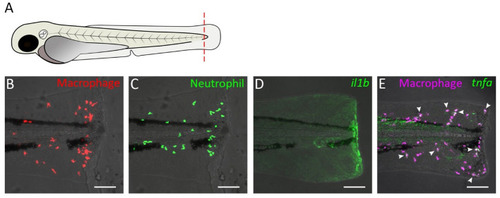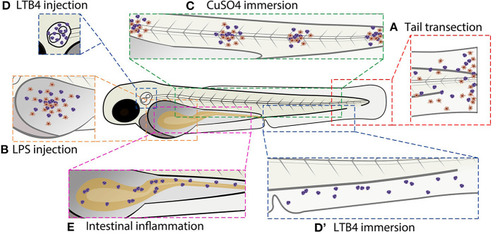- Title
-
Modeling Inflammation in Zebrafish for the Development of Anti-inflammatory Drugs
- Authors
- Xie, Y., Meijer, A.H., Schaaf, M.J.M.
- Source
- Full text @ Front Cell Dev Biol
|
Tail transection in zebrafish larvae as a model for inflammation. |
|
Schematic overview of commonly used zebrafish larval inflammation models. |


